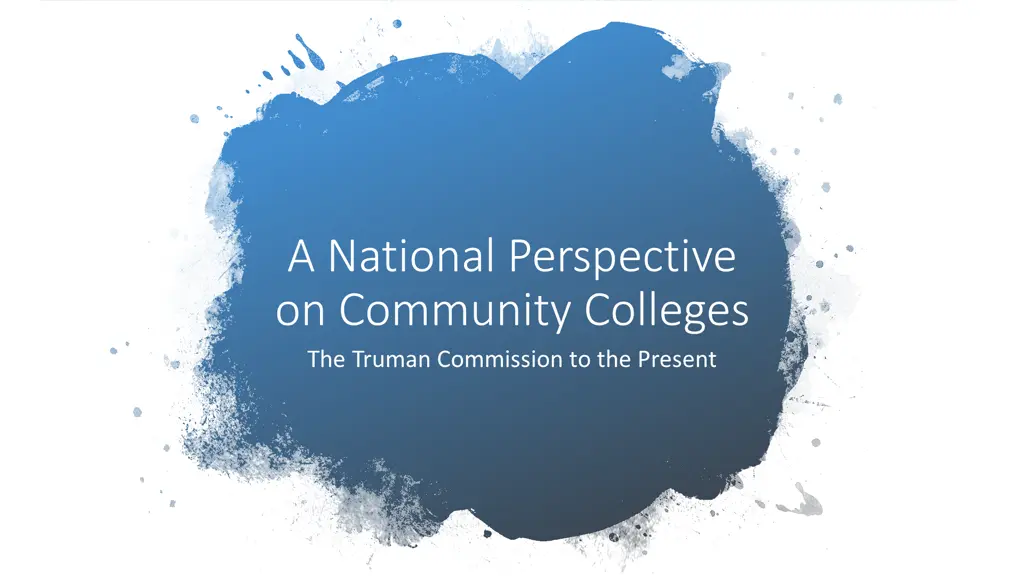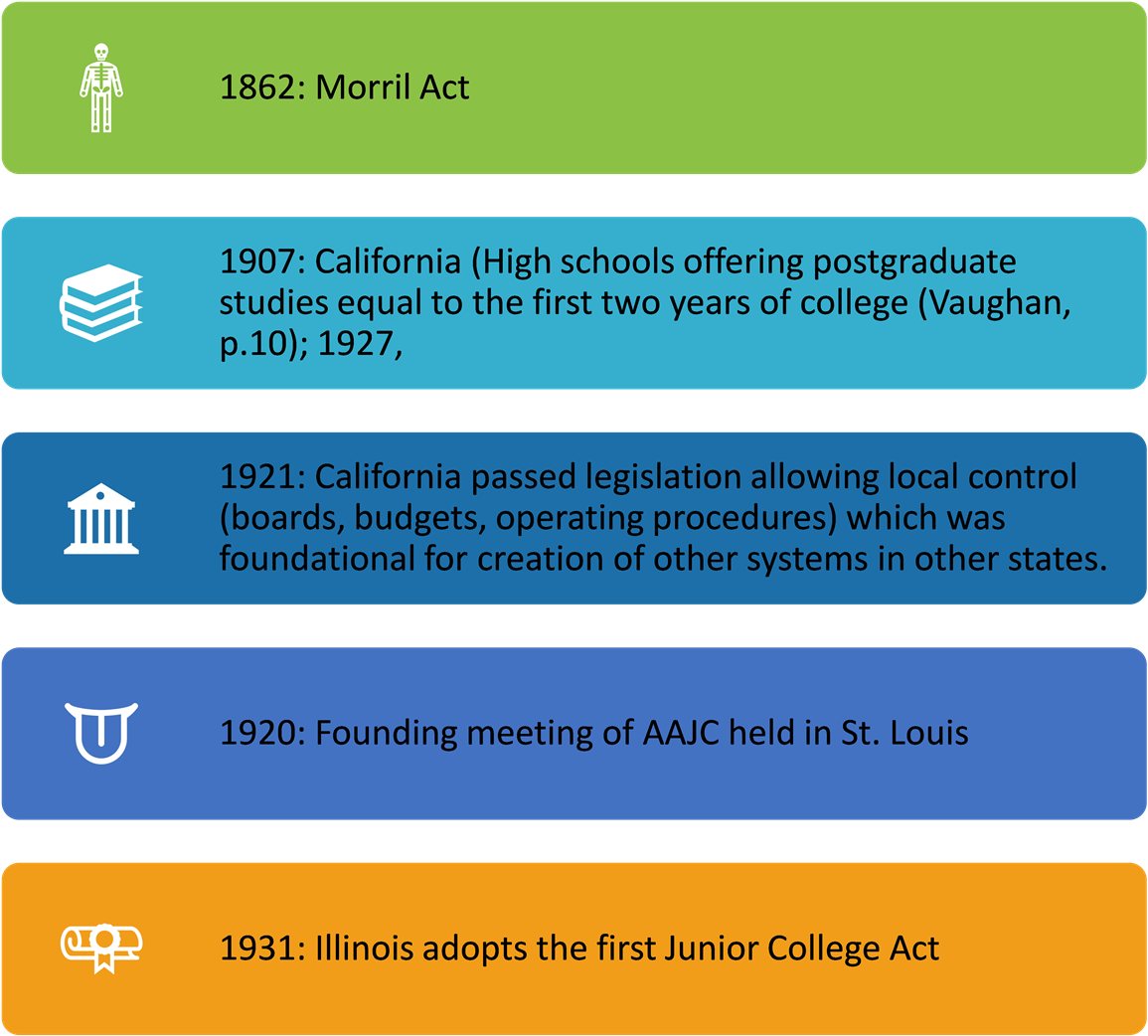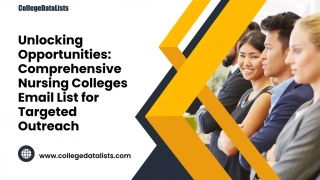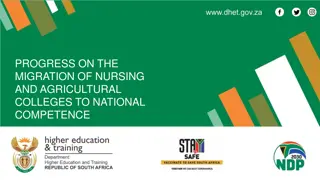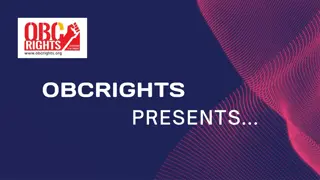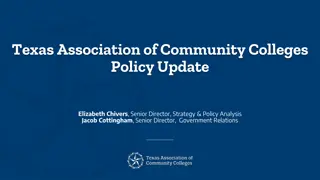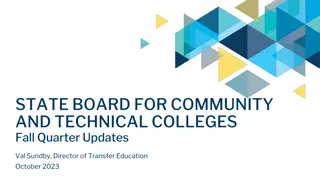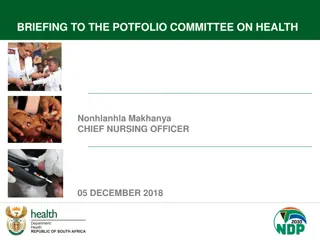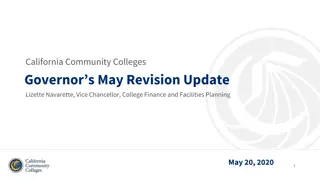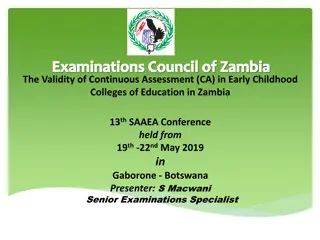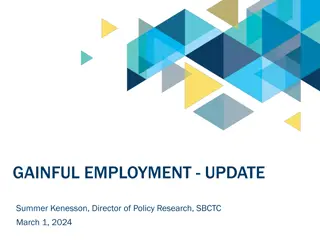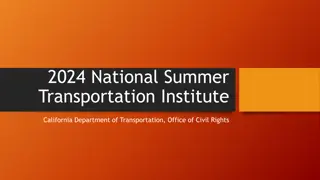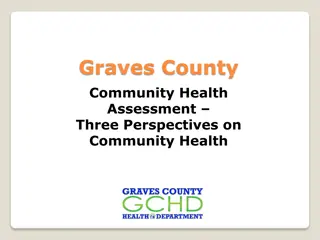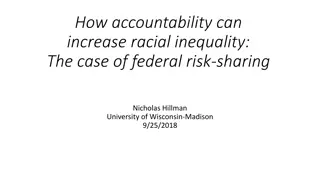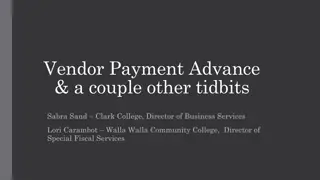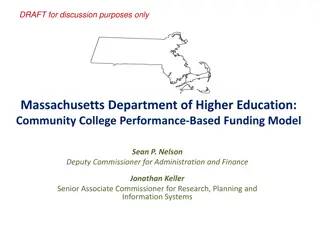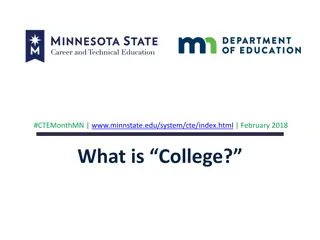A National Perspective on Community Colleges
Historical overview of community colleges in the United States, from the passage of the Morril Act in 1862 to the present day. It explores the founding legislation, the impact on higher education, and the goals and challenges faced by community colleges. The presentation includes images and important facts and figures.
- community colleges
- Truman Commission
- Morril Act
- higher education
- history
- goals and challenges
- founding legislation
- enrollment
- financial support
Download Presentation

Please find below an Image/Link to download the presentation.
The content on the website is provided AS IS for your information and personal use only. It may not be sold, licensed, or shared on other websites without obtaining consent from the author. Download presentation by click this link. If you encounter any issues during the download, it is possible that the publisher has removed the file from their server.
E N D
Presentation Transcript
A National Perspective on Community Colleges The Truman Commission to the Present
1862: Morril Act 1907: California (High schools offering postgraduate studies equal to the first two years of college (Vaughan, p.10); 1927, Founding Legislation 1921: California passed legislation allowing local control (boards, budgets, operating procedures) which was foundational for creation of other systems in other states. 1920: Founding meeting of AAJC held in St. Louis 1931: Illinois adopts the first Junior College Act
Higher Education for American Democracy, 1947
"Educational Leaders...felt that somehow the colleges had not kept pace with the changing social conditions, that the programs of higher education would have to be repatterned if they were to prepare youth to live satisfyingly and effectively in contemporary society." (Higher Ed. V1. P.1) The Task of the Commission "the numbers of veterans availing themselves of veterans' educational benefits falls short of the numbers that records... show could benefit from higher education" (p.1) Doubling of the 1947-8 enrollment possible if infrastructure and financial support made available.
Four Major Factors Impact of technology on society. Impact on interpersonal relations and duties of citizens. New skills and greater maturity needed. USA made up of the entire world. "Effect democratic reconciliation, so as to make of the national life one continuous process of interpersonal, intervocational and intercultural cooperation." (p.2) Maintaining peace with the rest of the world (United Nations). "[R]equires of our citizens a knowledge of other peoples...such as has not hitherto been so urgent. (p.2) Atomic age--"ambivalent promise...underscored the need for education and research for the self- protection of our democracy." Critical Need for Education
Education for a "fuller realization of democracy." Principal Goals Education "directly and explicitly for international understanding." Education for "application of creative imagination and trained intelligence" for the solution of social problems . (p.8)
Lack of educational attainment 1900 250,000 enrolled in higher educational institutions 1947 2,354,000 included one million veterans. (144.1 million) 2021 (fall) 15.4 million (339.9 million) Financial support--$1,000,000 invested by federal government in 1947 was less than one-half of one percent of the GNP. Education for All Rising tuition, movement away from the "principle of free education." (p.28) Not enough colleges and institutions. Dependence on individual's cultural and economic status: "the kind and amount of education they may hope to attain depends, not on their own abilities, but on the family or community into which they happen to be born...or, worse still, on the color of their skin of the religion of their parents." (p.27) It is "depriving the Nation of a vast amount of potential leadership and potential social competence which is sorely needs." (p.29)
"Educational system in which at no level...will a qualified individual in any part of the country encounter an insuperable economic barrier." (p.36) High school education must be improved "Tuition-free education should be available...for the traditional 2-year junior college courses." (p.37) Education Without Barriers Financial assistance for competent students in 10th through 14th grades (Higher Education Act 1965) Lowering tuition costs in public controlled colleges Expand adult education Public education at all levels equally accessible
Education Gap
"Whatever form the community college takes, its purpose is educational service to the entire community, and this purpose requires of it a variety of functions and programs. It will provide education for the youth of the community certainly, so as to remove geographic and economic barriers to educational opportunity and discover and develop individual talents at low cost and easy access. But in addition, the community college will serve as an active center of adult education. It will attempt to meet the total post-high school needs of its community." (p.68) The Community College
"TOO OFTEN [THEY ARE] "EDUCATED" IN THAT [THEY HAVE] ACQUIRED COMPETENCE IN SOME PARTICULAR OCCUPATIONS, YET FALL SHORT OF THAT HUMAN WHOLENESS AND CIVIC CONSCIENCE WHICH THE COOPERATIVE ACTIVITIES OF CITIZENSHIP REQUIRE." (P.48) COLLEGE MUST FIND THE RIGHT RELATIONSHIP BETWEEN SPECIALIZED TRAINING ON THE ONE HAND, AIMING AT A THOUSAND DIFFERENT CAREERS, AND THE TRANSMISSION OF A COMMON CULTURAL HERITAGE TOWARD A COMMON CITIZENSHIP ON THE OTHER." (P.49) "IT IS URGENTLY IMPORTANT IN AMERICAN EDUCATION TODAY THAT THE AGE- OLD DISTINCTION BETWEEN EDUCATION FOR LIVING AND EDUCATION FOR MAKING A LIVING BE DISCARDED." (P.61) Today's College Graduate
Joliet Junior College (1901) William Rainey Harper and Stanley Brown 1931 Illinois first Junior College Act Growing the National System 1940 12 public junior colleges in Illinois 1947 AAJC enrollment had grown from less than 51,000 in 1927-8 to more than 400,000 in 1946-7 (Higher Ed. V.2, p.8) Addition of vocational mission. "Such an institution is not well characterized by the name "junior" college." (p.9)
Today's college student is decidedly nontraditional (College Students Aren't Who You Think They Are By Elissa Nadworny) Financially independent from their parents Having a child or other dependent Being a single caregiver Lacking a traditional high school diploma Delaying postsecondary enrollment Attending school part time Being employed full time Close to 74 percent of undergrads fall into one of these categories and about a third have two or three. 17 million Americans enrolled in undergraduate higher education National Center for Education Statistics. 1 in 5 is at least 30 years old (Fall 2021 37% over 25) About half are financially independent from their parents 1 in 4 is caring for a child 47 percent go to school part time at some point A quarter take a year off before starting school 2 out of 5 attend a two-year community college 44 percent have parents who never completed a bachelor's degree
Impact on Attendance In fall 2021, approximately 10.8 million undergraduate students (70 percent) enrolled at 4-year institutions and 4.7 million undergraduate students (30 percent) enrolled at 2-year institutions. At 4-year institutions,7.9 million (73 percent) attended full time; and 2.9 million (27 percent) attended part time. At 2-year institutions,1.6 million (35 percent) attended full time; and 3.0 million (65 percent) attended part time. (https://nces.ed.gov/programs/coe/indicator/csb/postsecondary-students)
Where We Are Today 15
STUDENTS ARE COMING. BUT. . . how EFFECTIVE are COMMUNITY COLLEGES? 17
How do we measure effectiveness? How should we measure success? 18
Access and Success Community College 1.0 ACCESS through ENROLLMENTS + Community College 2.0 ACCESS + COMPLETION + Community College 3.0 ACCESS + COMPLETION + POST GRADUATE SUCCESS 19
Community College 1.0 ACCESS DIVERSITY in ENROLLMENTS 20
Six-Year Outcomes: 2016 Cohort Community College 2.0 COMPLETION 43% 21 Taken from https://nscresearchcenter.org/wp- content/uploads/Completions_Report_2022.pdf
College-level Math and Writing 2nd semester Dev Ed Graduation 4th semester 3rd semester Leaky Pipeline Plugging the Holes 22
Guided Guided Pathways Pathways Equitable student success On-time graduation 23 https://southseattle.edu/guided-pathways
But. completion is not enough Students do not go to college to complete degrees Not all degrees are created equal Some degrees don t have independent value Opportunities upon completion may not be equitable 24 Adapted from Michael Gutierrez, President, Sacramento City College
Community College 3.0 Post-Graduation Success: Equity Outcomes https://fineartamerica.com/featured/i-graduated-now-im-smart-and-stuff-college- graduate-sourcing-graphic-design.html https://ingenium.engr.tamu.edu/you-graduated-without-a-job-offer-now-what/ 25
